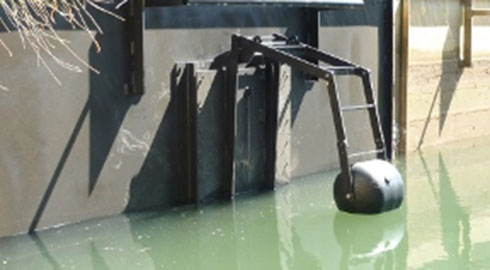
Approximately 70 percent of the coastal fish species in southeastern Australia migrate as part of their lifecycles (Fairfull and Witheridge, 2003). Fish, including key species such as Australian Bass, Sea Mullet, Short-finned and Long-finned eels, Freshwater Mullet and Freshwater Herring, migrate to access different habitats to breed, find food, a preferred habitat, or to avoid predators. The free passage of fish between estuarine and freshwater environments (and within rivers and streams) is a critical aspect of aquatic ecology in NSW.
Barriers to fish passage such as road crossings, weirs and floodgates which prevent the migration of native fish can have severe implications for these populations including preventing spawning, increasing the likelihood of disease or predation and restricting gene flow via fragmenting populations.
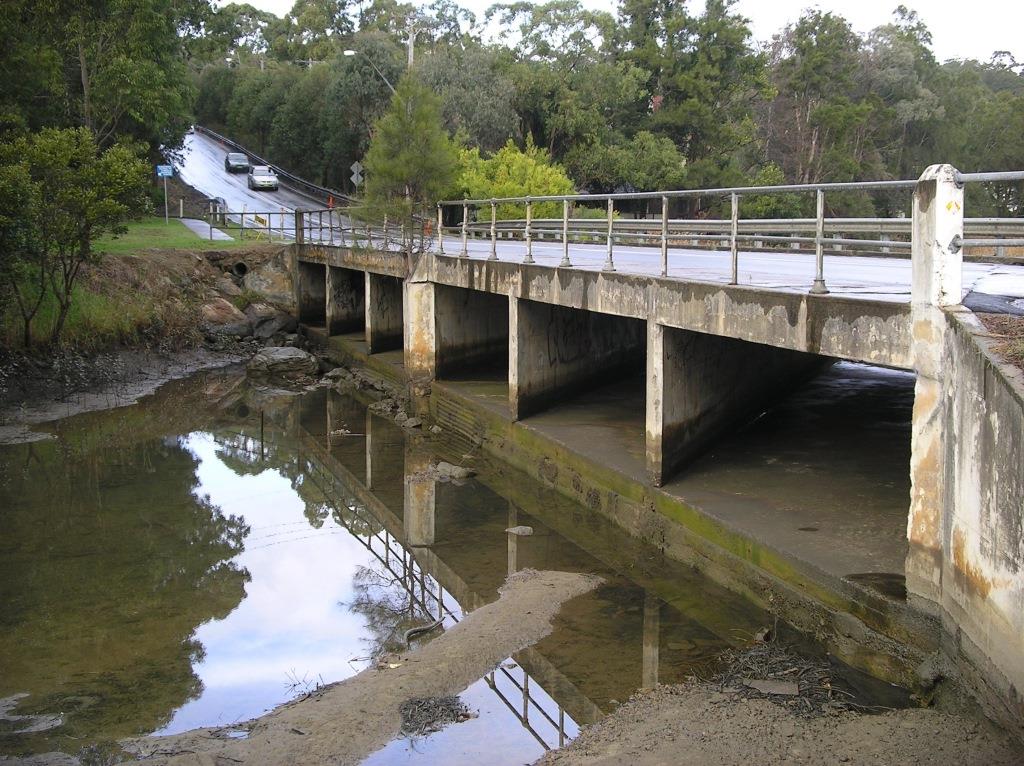
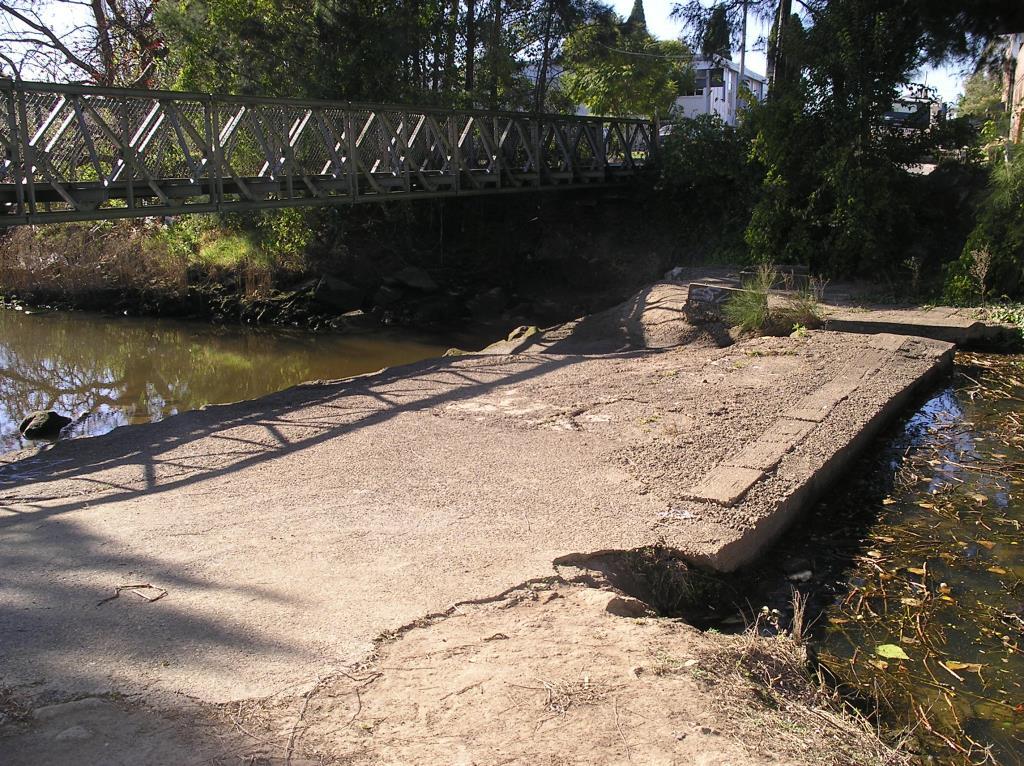
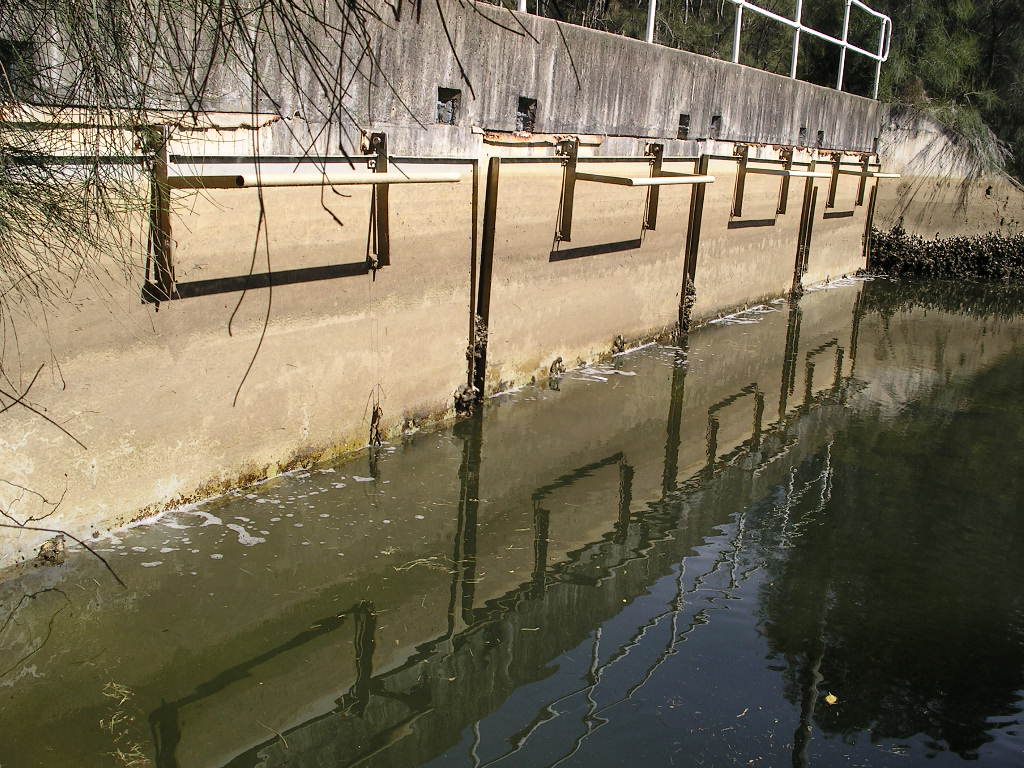
Road crossing restricting movement at low tide, weir forming the tidal limit and closed floodgate
Barriers can prevent fish passage by creating a physical blockage (e.g. dam, weir, closed floodgate, causeway), a hydrological barrier (e.g. creation of water with high flow velocity or turbulence which are unable to be traversed by fish), or by forming artificial conditions that act as behavioural barriers to fish (e.g. darkened areas within long pipe culverts, acidic waters from acid sulfate soil discharge and water with low dissolved oxygen levels associated with floodgated systems).
The solution
For any works in a waterway, seek advice from the relevant authority (e.g. NSW Department of Primary Industries (DPI) Fisheries, NSW DPI Water, NSW Roads and Maritime Services, local councils etc). For advice on fish friendly designs, consult NSW DPI Fisheries. More information can be found via the Legislative considerations below.
Where a structure is no longer needed, removal of that structure will provide the greatest benefit to fish passage, provided the structure is not preventing another issue arising, such as creation of river bed erosion, and release of large amounts of sediment.
Where a new structure is proposed, provide suitable passage for fish in new crossing designs. Bridges and arch structures have the least impact; avoid the use of causeways where possible, as these will limit fish movement opportunities at regular and low flows. Where a bridge is proposed, avoid locating foundations and piers within the main waterway channel, as these will collect debris and potentially exacerbate erosion within the stream, leading to potential structure failure.
Where culverts are installed under road surfaces, ensure they allow for adequate water volume to move through the structure at a depth and velocity that will allow for fish passage. This will likely mean using larger sized cells, ensuring a minimum of 0.2 – 0.5 metres water depth, and setting culverts at the same (or lower) level as the surrounding stream bed through inclusion of a “low flow cell”.
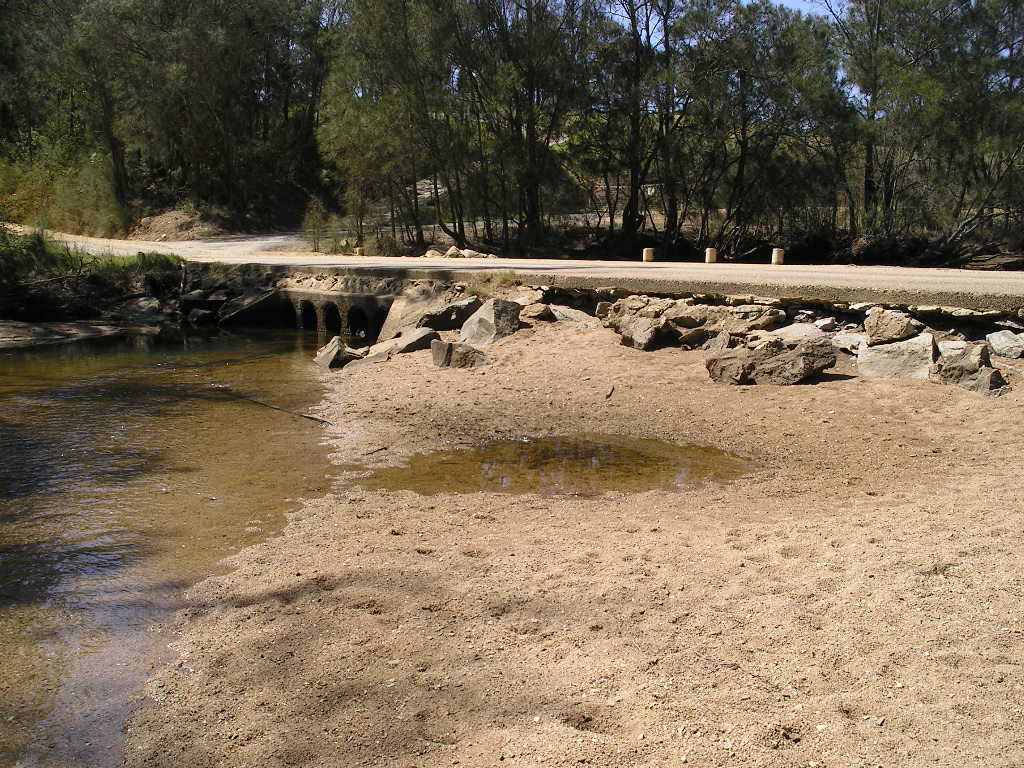
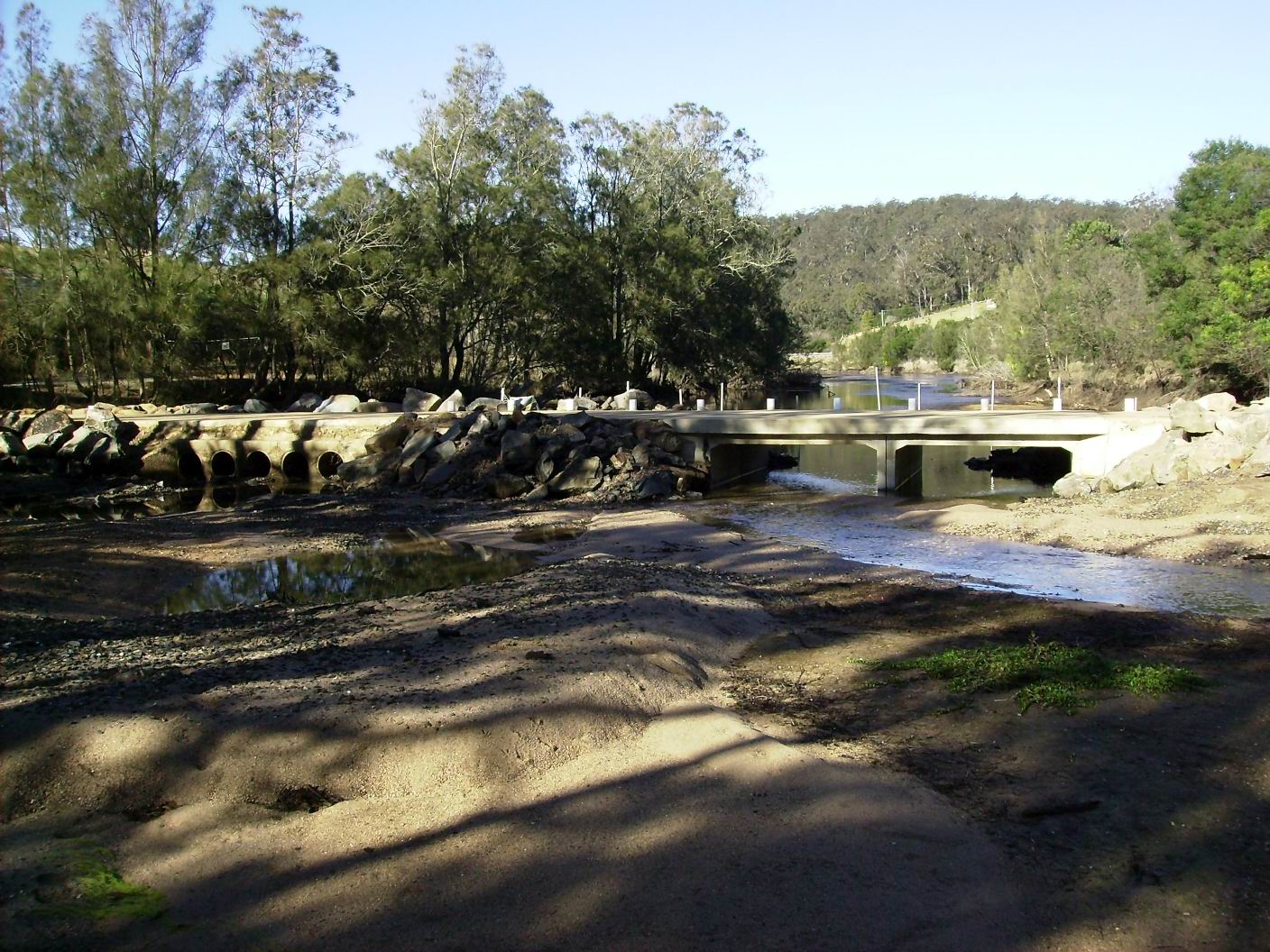
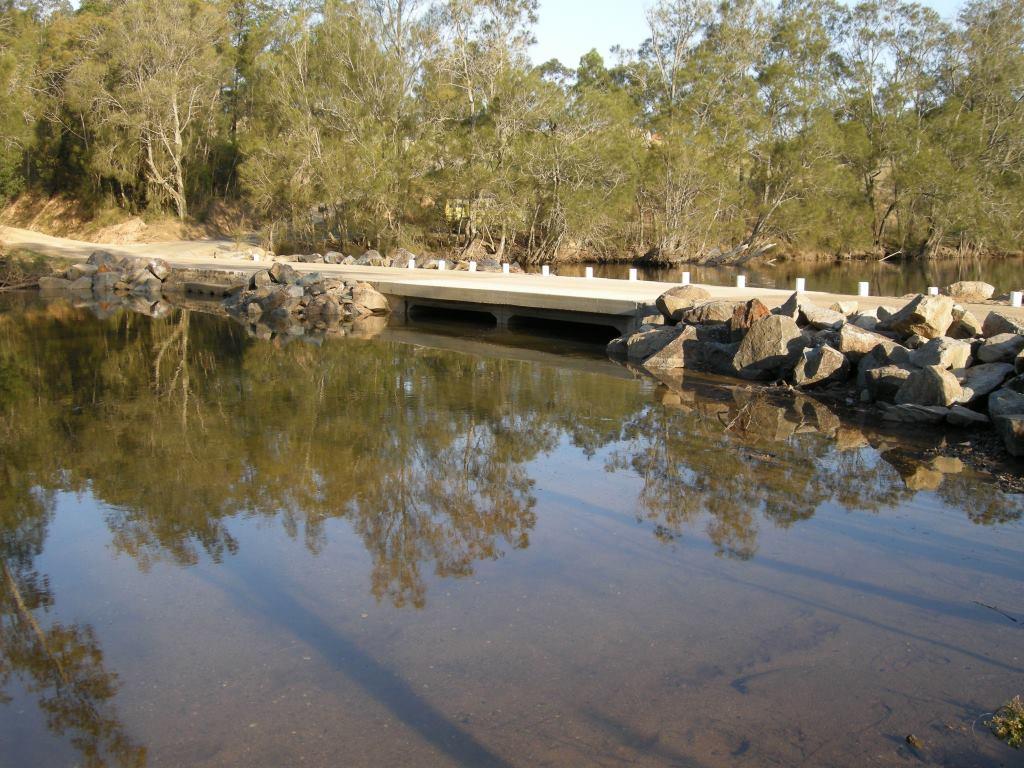
Road crossing restricting tidal movement (before) and after when box culverts installed (shown at low and high tide)
For structures such as weirs and some roads, installation of a fishway may be required. These structures allow for fish movement past the structure by creating a series of navigable “steps” that allow fish to briefly swim rapidly upstream, have a rest, then continue on their way until they reach the upstream side of the structure. In the lower part of the catchment, especially at the estuarine or tidal limit, the slope of the structure should be 1:30, meaning for every 1m rise in height, the fishway must be 30m in length. This gentle slope allows for smaller fish species, and the juveniles of larger fish to navigate the structure without being washed back down due to their poorer swimming abilities.
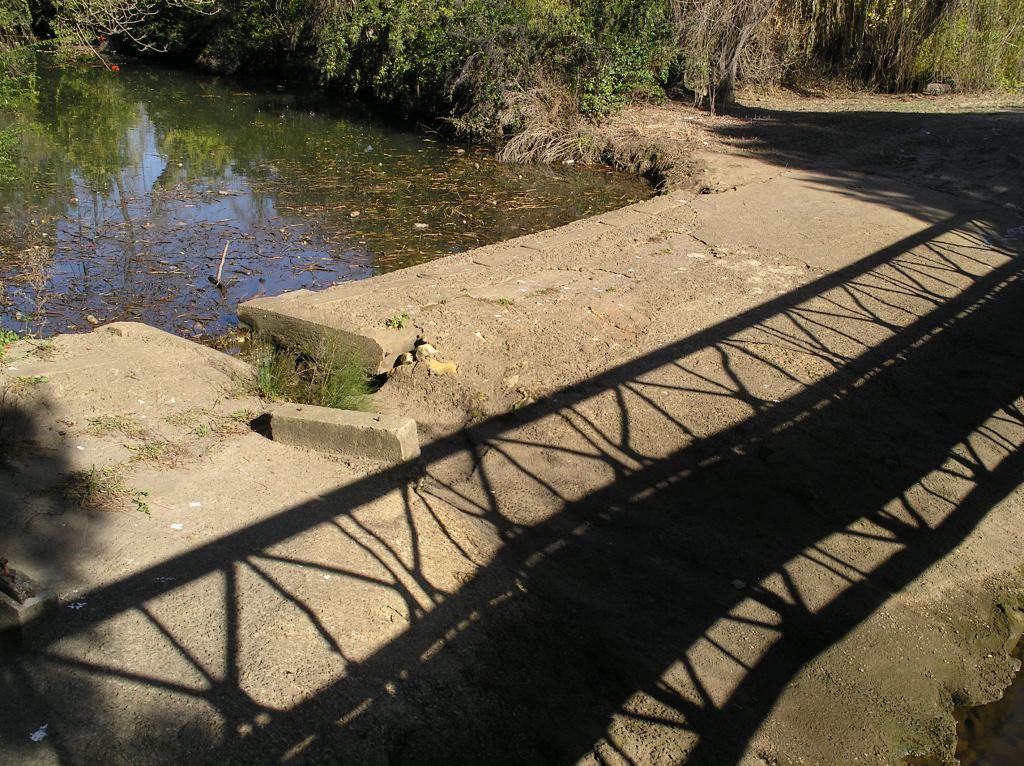
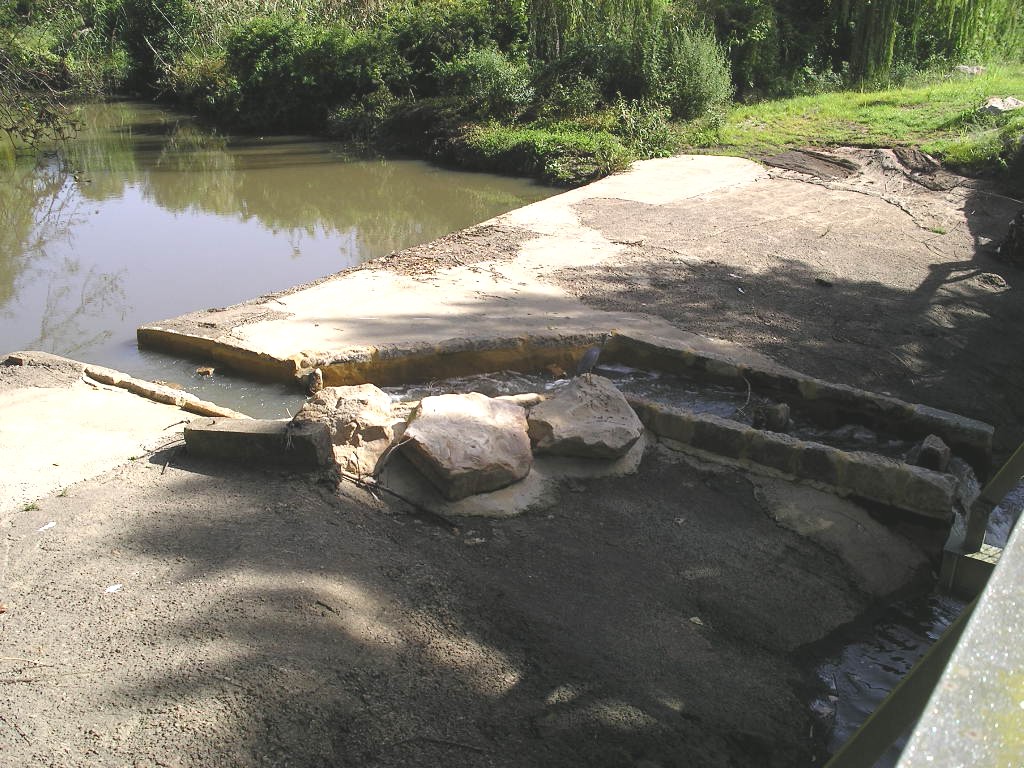
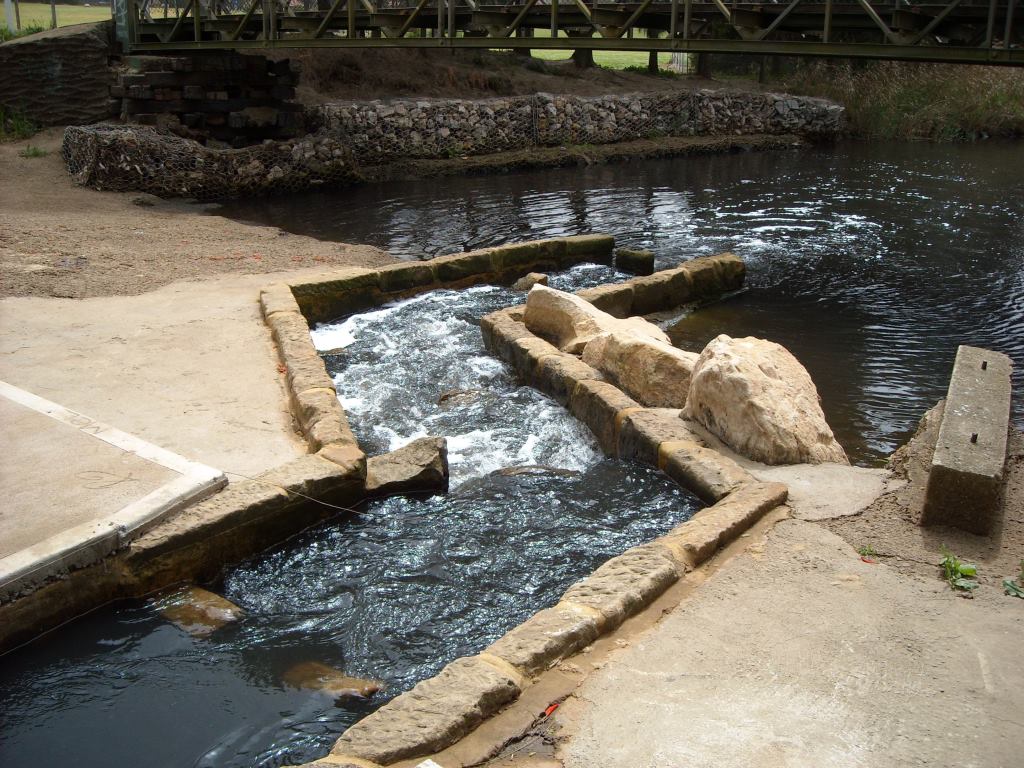
Wolli Creek weir before works (acting as the tidal limit) and after with modified partial width rock ramp fishway installed to allow fish to access upstream habitats
Watch juvenile mullet ascend the Wolli Creek fishway (courtesy Gavin Gatenby, Wolli Creek Preservation Society)
Modify existing floodgates by retrofitting a sluice gate, auto-tidal floodgate or winch gate to traditional flap floodgates to allow automatic exchange with estuarine water during non-flood periods and improve fish passage opportunities. Of these designs, sluice and winch gates are manually operated, whereas auto-tidal floodgates open automatically with each tide thanks to a float and hinge mechanism that can be set to ensure the required amount of water exchange occurs into the upstream drain.
.jpg)
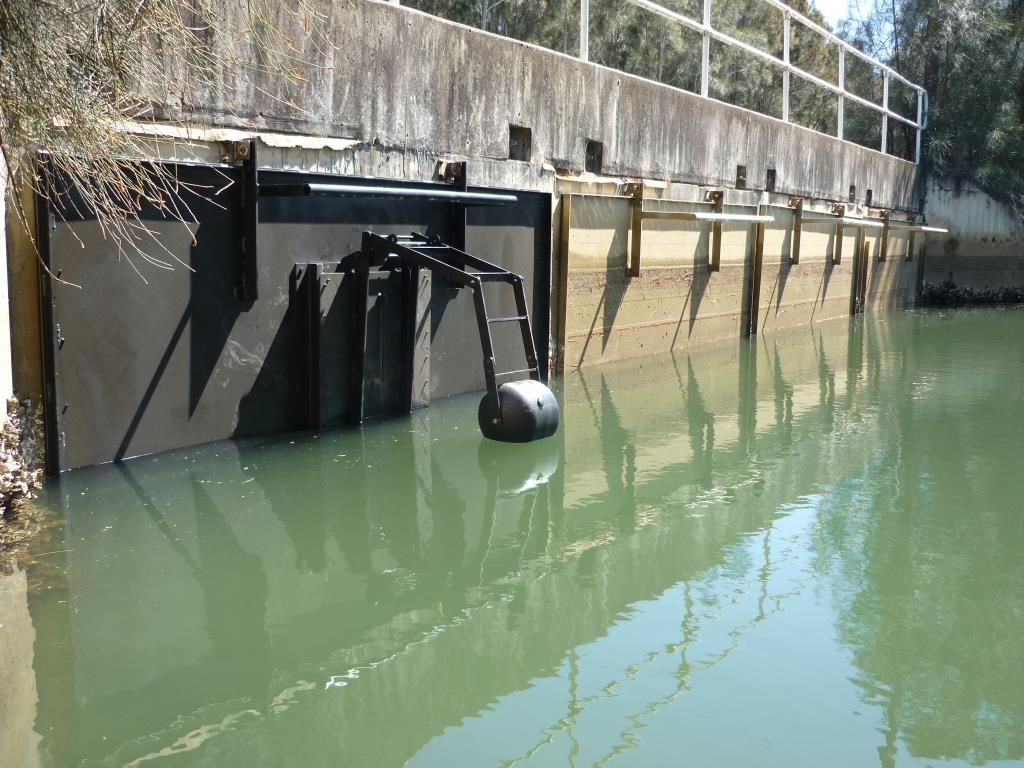
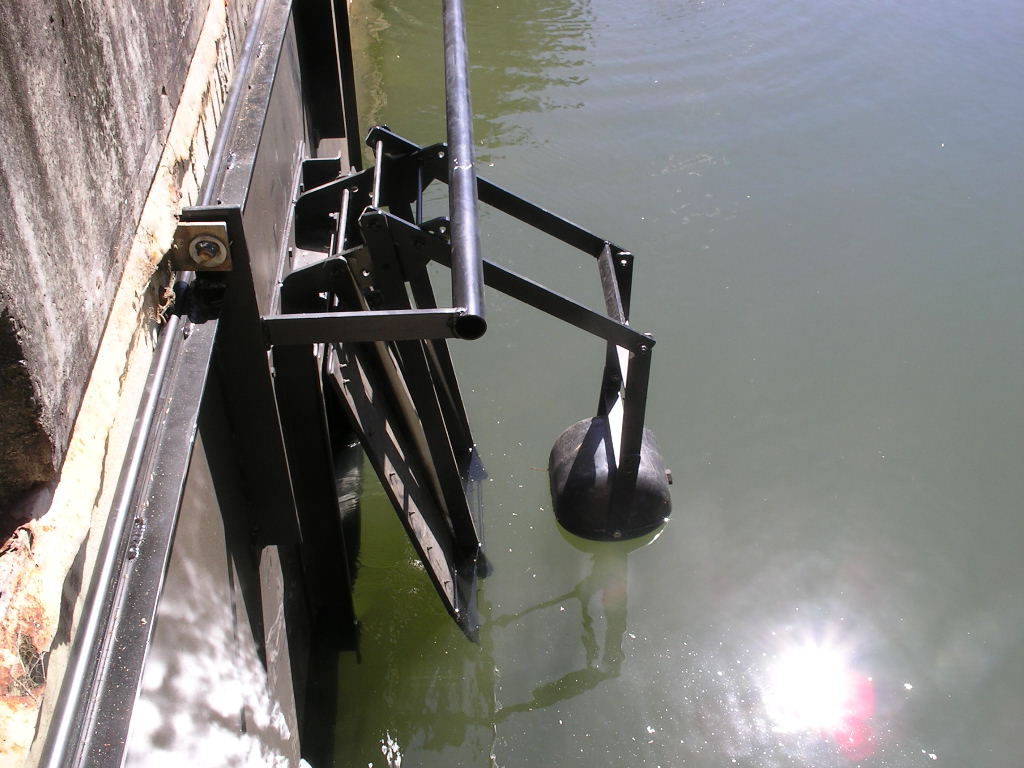
Closed floodgate (before) preventing fish passage upstream and after an auto-tidal floodgate installed to allow fish passage during each tidal cycle
Where acid sulfate soils are releasing acidic waters, “smart-gates” could be installed to allow for automated opening and closing of the floodgate based on water quality measurements. Aside from the structure itself, management of the feeder drain(s) may be required. By infilling drains, making the drain shallower, or allowing water to back up behind additional structures such as “leaky weirs” the potential of disturbing sulfidic soils and of exposing them to oxygen so that they can create acidic runoff can be minimised.
Return to Fish Friendly Marine Infrastructure
| Organisation | NSW Department of Primary Industries (Fisheries) |
|---|---|
| Contact | Scott Nichols ph:(02) 6626 1396 e: [email protected] |
| Funding Body | NSW Environmental Trust |
References and Resources
NSW DPI FIsheries Policy and Guidleines for Fish habitat conservation and management (2013 update)
Review of Water Control Structures in NSW - covers all structures found in coastal floodplains
Bringing Back the Fish report - remediation of fish passage barriers in coastal NSW
Roads
More information on fish friendly road crossings (DPI Fisheries)
Reports on assessing the impact of road crossings in NSW
Weirs
Assessing the impact of weirs on fish passage in NSW
Floodgates
NSW DPI Fisheries Floodgate management
NSW DPI Agriculture Managing drains and tidal creeks for fish passage
Assessing the impact of floodgates on fish passage in coastal NSW
University of Wollongong Decision Support System about floodplain management issues in the Wollongong City catchment. Has information about different waterway management options available (e.g. roads, concrete channels etc.).